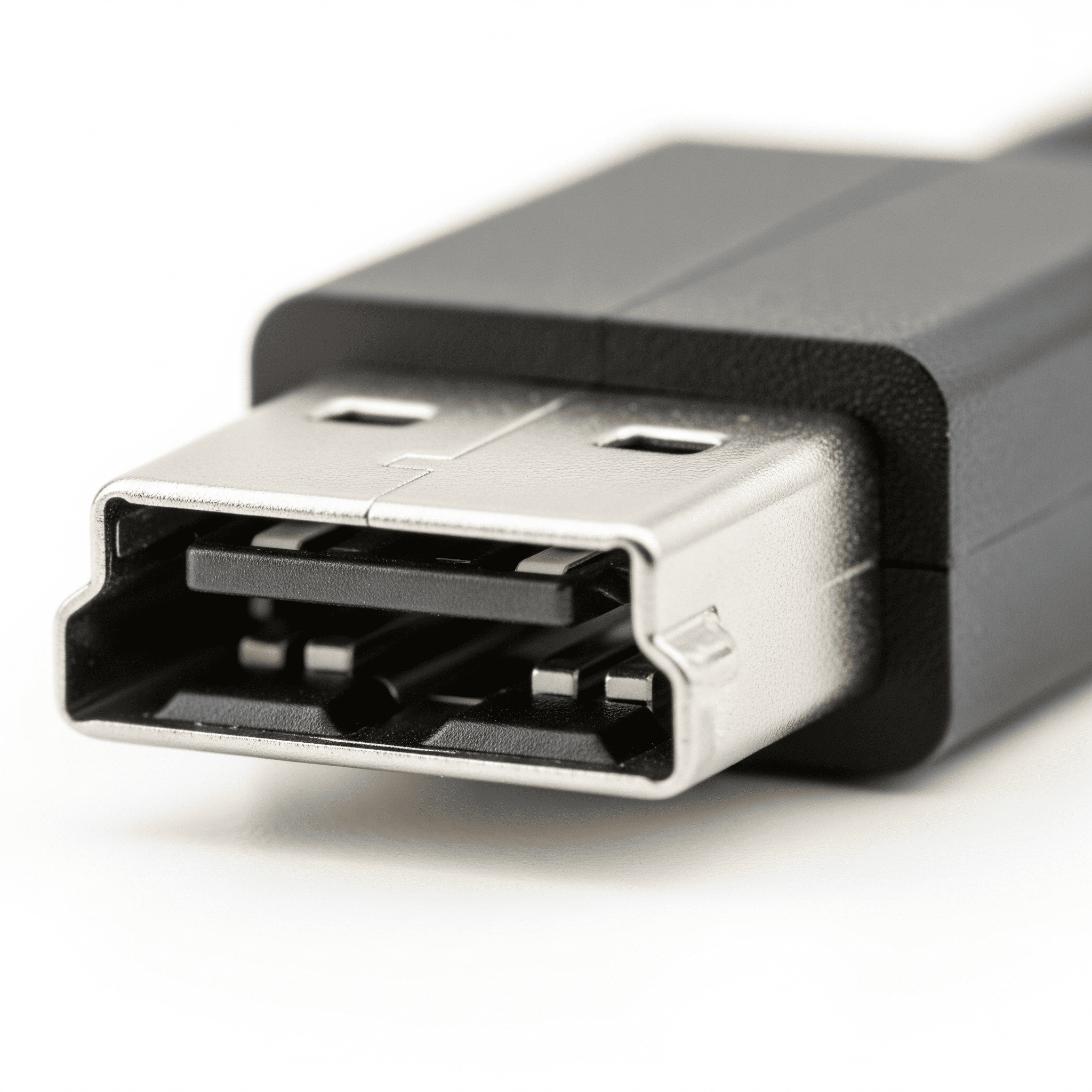Kingsgrove Branch:
USB B

USB B, a ubiquitous yet often overlooked connector, holds a surprising history and continues to play a vital role in our digital world. From humble beginnings to modern applications, this guide explores the evolution, intricacies, and future of USB-B, revealing its continued relevance in a rapidly changing tech landscape. We'll uncover the technical specifications, troubleshooting tips, and even consider its impact on sustainability and accessibility
This comprehensive exploration of USB-B delves into its past, present, and future, offering a detailed understanding of this versatile interface. Expect a journey through its historical context, modern applications, and a peek into potential future advancements. Let's embark on this fascinating journey
A Comprehensive Overview of USB-B Technology
USB-B, a ubiquitous interface, has played a significant role in connecting various devices for decades. Its journey from humble beginnings to its current applications is a testament to its enduring value Understanding its history, specifications, and applications is crucial for anyone working with or around this technology
Historical Context of USB-B
USB-B, in its various iterations, has been a constant presence in our digital lives. Its evolution from earlier versions to its current state is a story of adapting to the ever-increasing demands of data transfer and power delivery. Early versions focused on basic data transfer, while later versions incorporated more robust power delivery capabilities. This adaptability is a key factor in its enduring popularity
Key Specifications and Characteristics
USB-B interfaces are defined by a set of key specifications. Physical dimensions vary depending on the specific version, influencing its compatibility with different devices. Data transfer rates have evolved significantly over time, reflecting advancements in technology. Power delivery capabilities have also increased, enabling the connection of more demanding devices. These characteristics collectively shape the utility and applicability of USB-B in various settings
Types of USB-B Connectors and Functionalities
Different types of USB-B connectors exist, each serving a unique function. These variations are crucial for ensuring compatibility and preventing errors. Understanding these nuances is essential for effectively utilizing USB-B connections
- Standard USB-B Connectors: These are the most common type, used for data transfer and basic power delivery. They are characterized by their rectangular shape and are widely compatible with various peripherals
- High-Speed USB-B Connectors: Designed for faster data transfer rates, these connectors often feature enhancements in their internal circuitry to accommodate higher bandwidths. This translates to faster data exchange and enhanced performance in tasks demanding quick data transfers
- Power Delivery USB-B Connectors: These connectors are specifically designed for delivering higher power to connected devices, which is crucial for devices that require substantial power, such as external hard drives or specialized peripherals
USB-B in Contemporary Applications
USB B interfaces continue to be a prevalent choice for various contemporary applications. Its versatility is a key factor in its continued use
USB-B ports, while a bit outdated, still pop up in some places. Thinking about upgrading to a modern USB-C charger like this one usb c charger might be a good idea, since it's super versatile. USB-B, though, remains a solid connector for certain tasks, especially older devices
Modern Devices Utilizing USB-B
A wide range of modern devices utilize USB-B connections, including printers, scanners, external hard drives, and certain types of peripherals. This extensive compatibility reflects the enduring relevance of USB-B in various contexts
USB-B, a familiar friend in the tech world, is a bit of a relic these days. But did you know that HDMI to USB-C adapters are all the rage now? They're super handy for connecting devices that don't have the usual USB-B ports, like those old but still-loved TVs or consoles, check out the latest on HDMI to USB C for more on this! Fortunately, USB-B is still relevant for many older peripherals, making it a worthwhile standard to understand
Comparison with Other Contemporary Interfaces
Comparing USB-B with other interfaces like USB-C or Thunderbolt reveals both advantages and disadvantages. USB-B often offers a more cost-effective solution for certain applications, while USB-C provides greater flexibility and faster data transfer rates. The choice depends heavily on the specific needs of the application
Challenges and Potential Solutions
Some challenges associated with using USB-B include limitations in data transfer rates compared to newer technologies. Potential solutions involve utilizing higher-speed versions of USB-B or exploring alternative interfaces
Ongoing Relevance in Specific Industries
USB-B remains relevant in industries where its features provide a cost-effective and functional solution. This includes industrial automation, point-of-sale systems, and specialized medical devices
Technical Specifications and Implementation Details
The technical specifications of USB-B encompass several crucial elements. Understanding these specifications is essential for proper implementation
Fundamental Technical Specifications
Electrical protocols, signal levels, and error correction mechanisms are fundamental aspects of USB-B implementation. These factors directly influence the reliability and efficiency of data transfer
Practical Implementation in Devices
The practical implementation of USB-B involves hardware and software components. The hardware component includes the physical connector, while the software component manages the communication protocols
Troubleshooting USB-B Connection Issues
Troubleshooting USB-B connection problems can involve both hardware and software approaches. Identifying the root cause of the issue is crucial for effective troubleshooting, see USB hub
| Data Transfer Rate | Compatibility |
|---|---|
| Low | Older peripherals |
| Moderate | Some modern peripherals |
| High | Modern peripherals |
Safety Considerations and Regulatory Compliance: Usb B
Safety standards and regulations are paramount in the design and manufacturing of USB-B devices
Safety Standards and Regulations
Compliance with safety standards ensures user safety and prevents potential hazards
Grounding and Shielding Techniques, Usb b
Grounding and shielding techniques are crucial for mitigating electrical hazards
Regulatory Compliance Requirements
Regulatory compliance requirements vary by region or jurisdiction, necessitating adherence to specific standards
Future Trends and Developments in USB-B
The future of USB-B is poised for evolution, potentially incorporating advancements in data transfer rates and power delivery capabilities
Potential Future Directions
Future directions may involve integration with emerging technologies, further enhancing its functionality
| Potential Applications | Associated Costs |
|---|---|
| High-performance peripherals | Moderate increase |
| Portable devices | Slight increase |
Concluding Remarks
In conclusion, USB-B, despite its seemingly simple form, embodies a fascinating blend of history, technology, and future potential. From its role in powering essential devices to its influence on sustainable practices and accessibility, its story is one of enduring innovation. As we've seen, this humble connector has a surprising amount to teach us about the ever-evolving digital world
Detailed FAQs
What are the common troubleshooting steps for USB-B connection problems?
First, check the physical connection. Ensure the cable is securely plugged into both devices. If the problem persists, try a different USB-B cable. Next, update the device drivers for the USB-B port and the connected device. If the issue persists, check for conflicts with other devices or software using the same USB ports
Finally, try restarting both the computer and the device
How does USB-B compare to other modern interfaces?
USB-B's strengths lie in its compatibility with older devices and its reliable, consistent performance. However, its data transfer speeds are often slower than newer interfaces like USB-C. The choice between USB-B and other interfaces depends on the specific needs of the application and the existing infrastructure
What are some safety considerations when using USB-B?
Always ensure proper grounding and shielding to prevent electrical hazards. Be mindful of potential voltage surges and avoid using damaged cables or ports. Consult manufacturer guidelines for specific safety instructions for your USB-B devices
Recent posts

Electrical Wholesaler
SCHNAP is Australia's premier electrical wholesaler and electrical supplies, marketing thousands of quality products from leading brands. Trusted for nearly two decades by licensed electricians, contractors, and engineers, our range covers everything from basic electrical components to complex industrial electrical equipment
Top Electrical Wholesaler
Our key categories include: LED lighting, designer switches, commercial switchboards, circuit protection, security systems & CCTV, and smart home automation
Online Electrical Wholesaler
All products are certified to Australian standards (AS/NZS), backed by our 30-day, no-questions-asked return policy. Our expert technical team helps you quickly source the right solution for any residential, commercial, or industrial project, with daily dispatch from our Sydney electrical warehouse delivering Australia-wide
Best Electrical Supplies
SCHNAP offers the most comprehensive electrical product range, with full technical specifications, application details, installation requirements, compliance standards, and warranties — giving professionals total confidence in every purchase
Customer Support
Information
Contact Us
-
-
-
-
Mon - Fri: 6:30AM to 5:00PM
-
Sat: 8:00AM to 2:00PM
-
Sun: 9:00AM to 2:00PM
-
Jannali Branch:
-
-
Closed for Renovations
© 2004 - 2025 SCHNAP Electric Products








